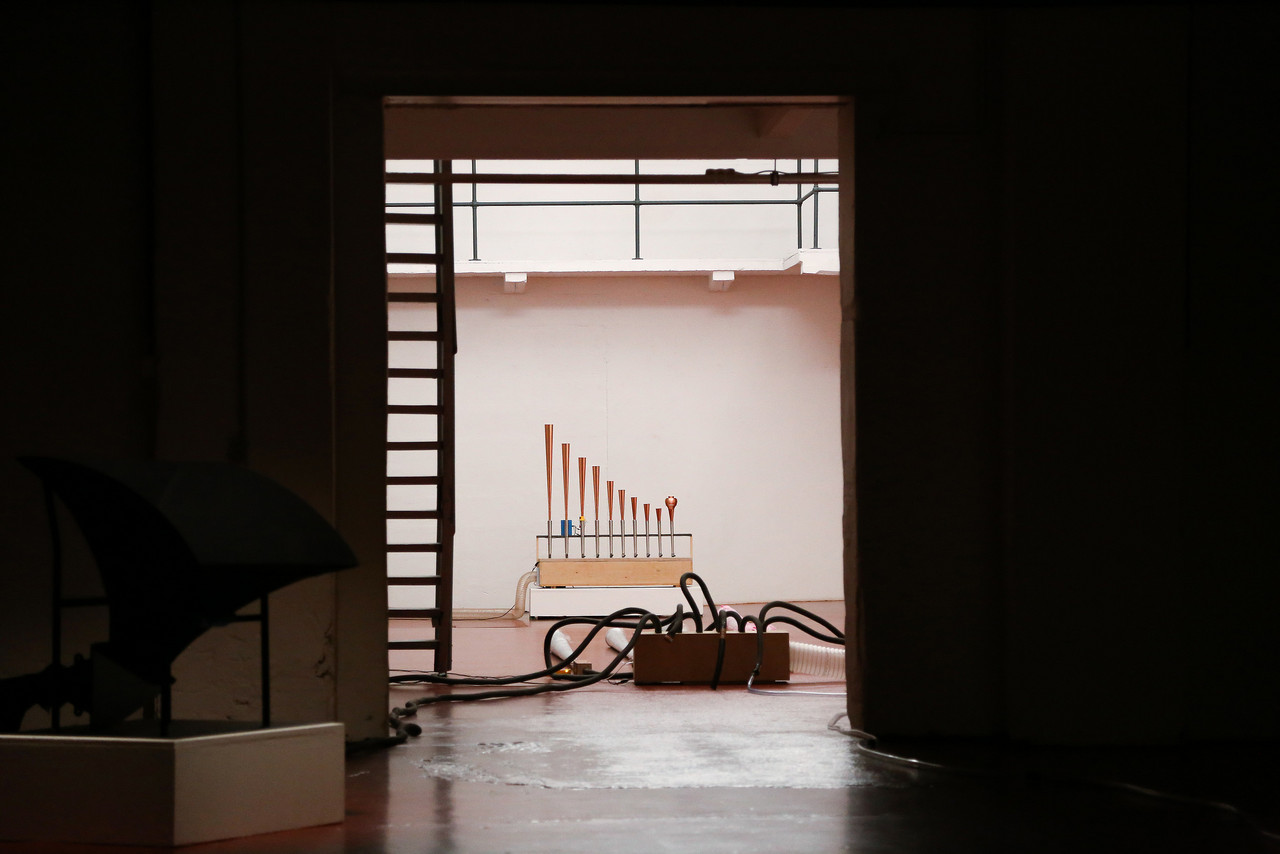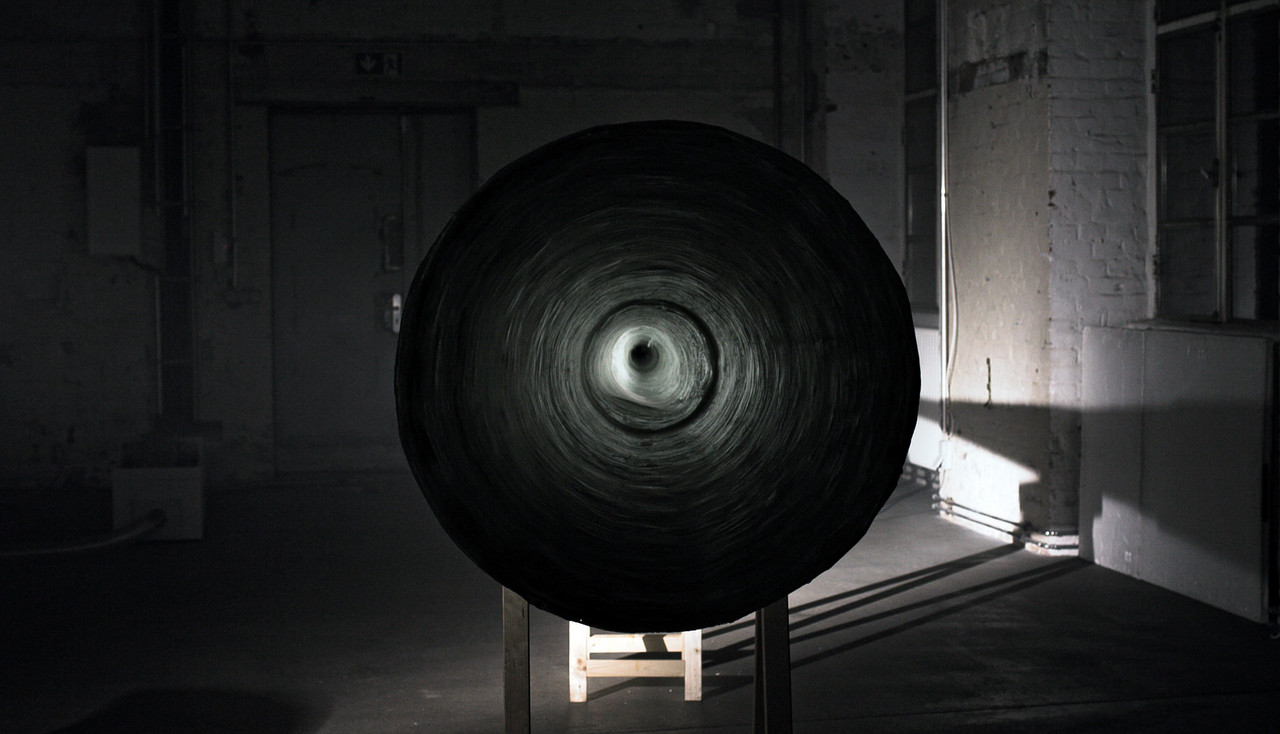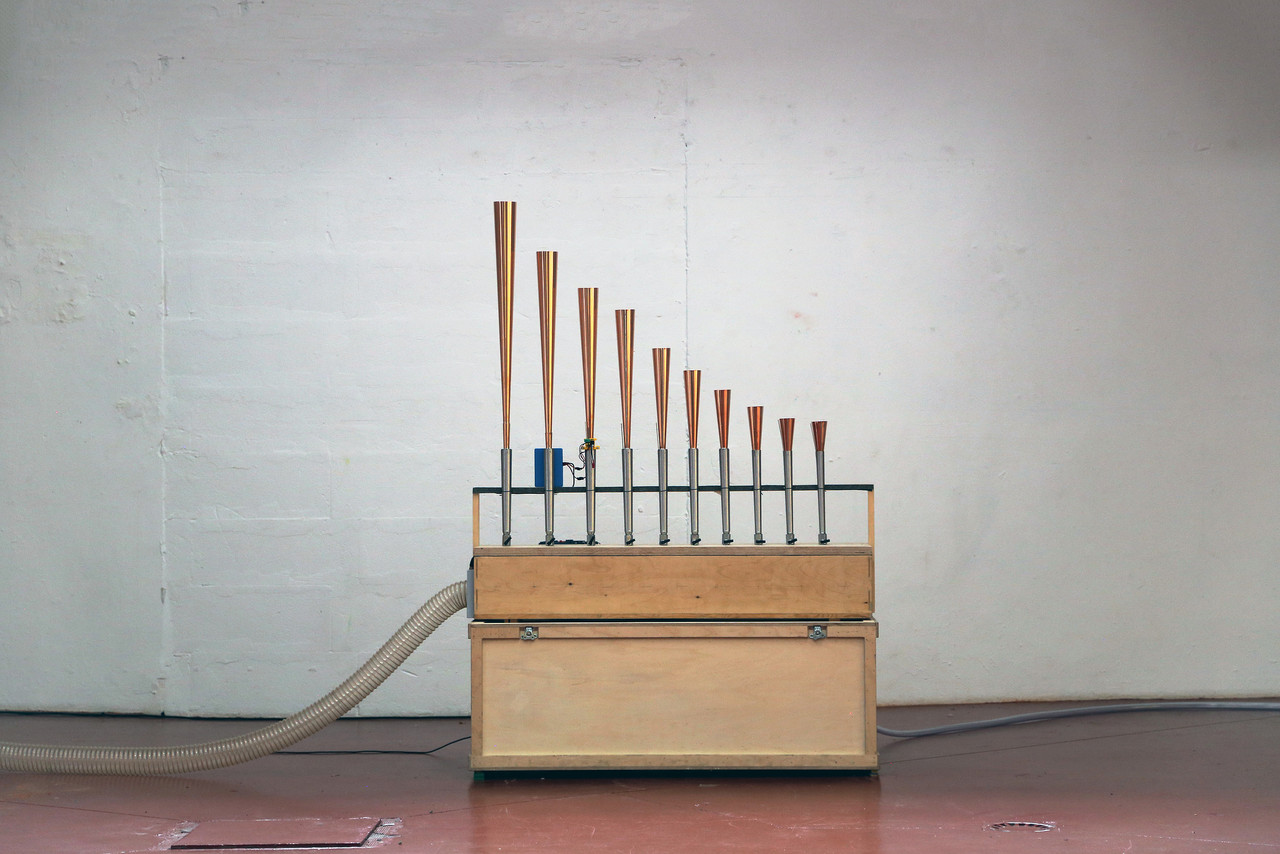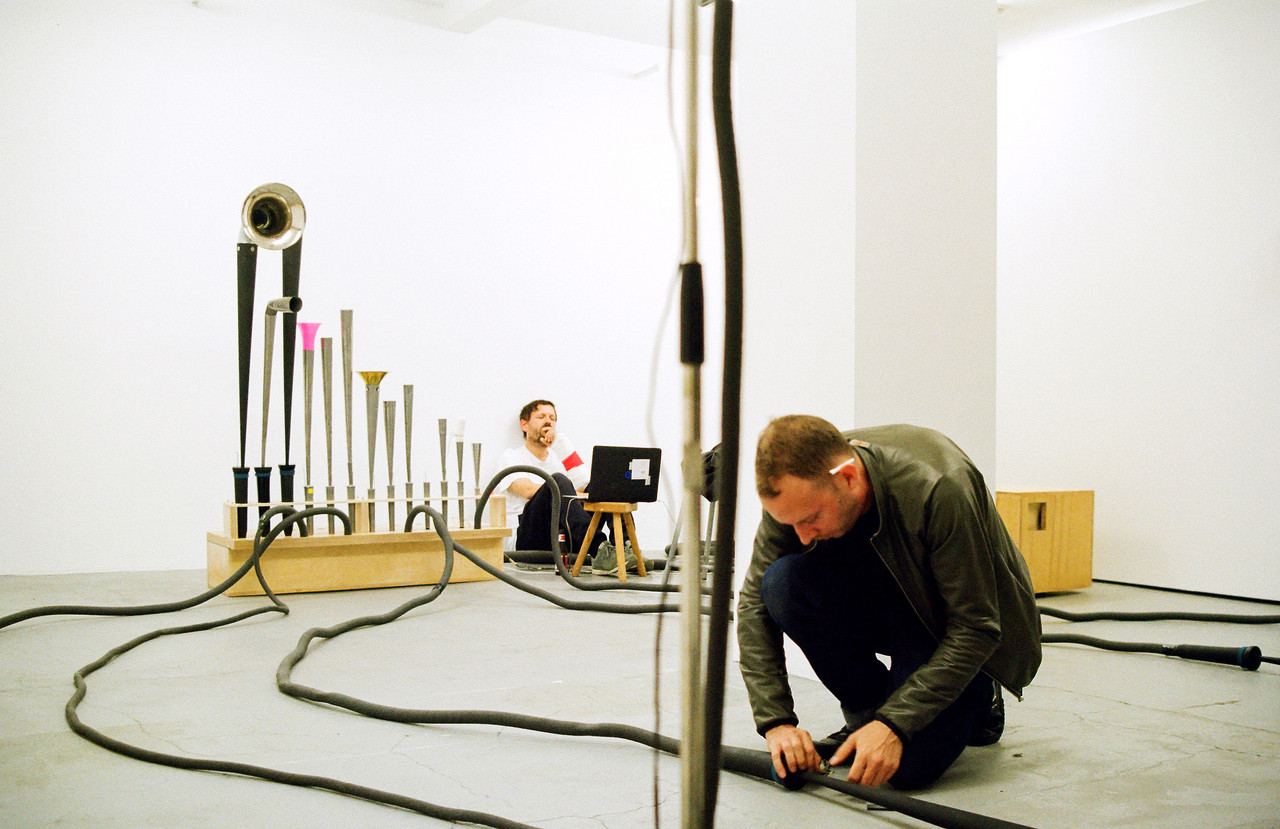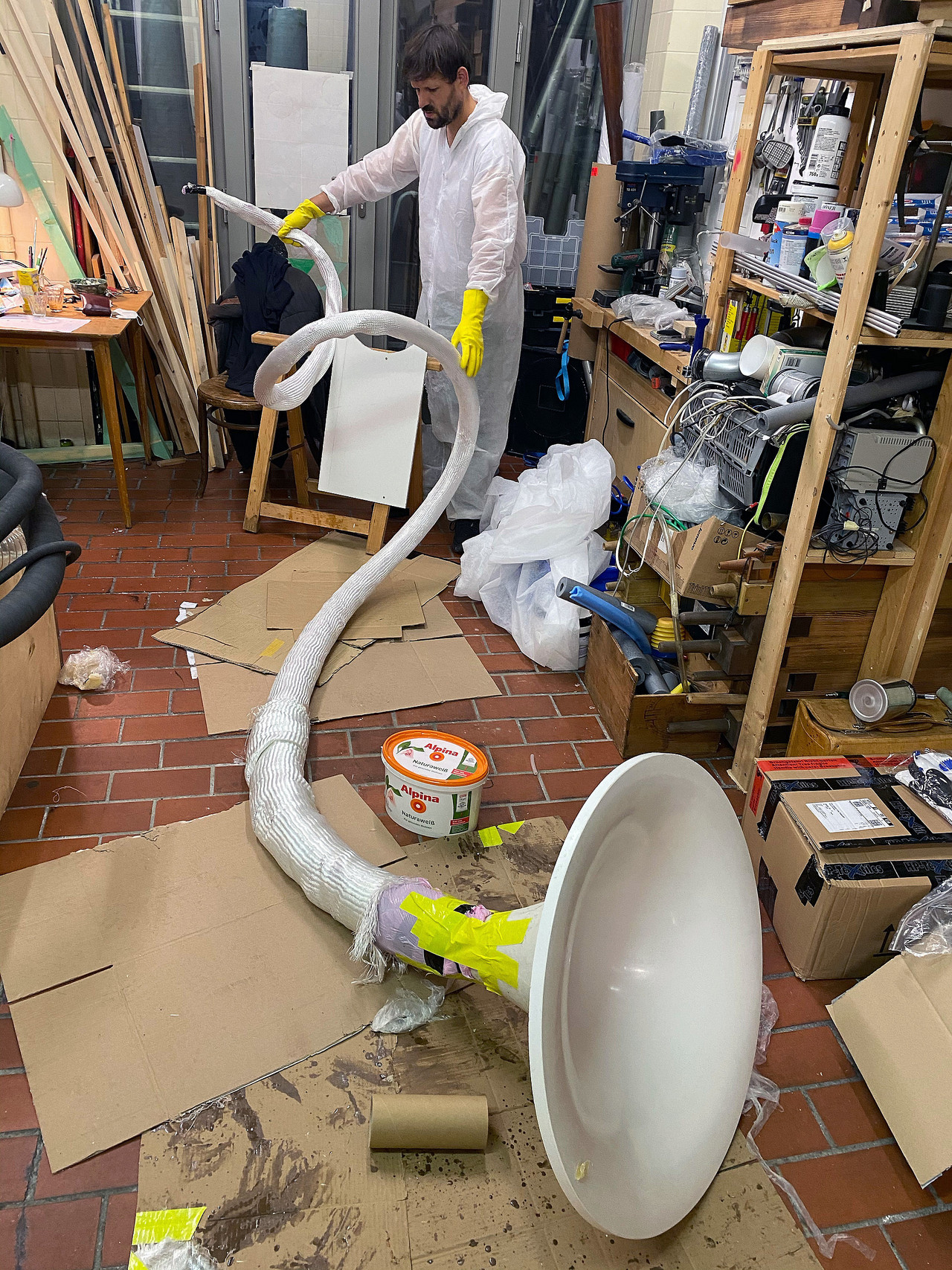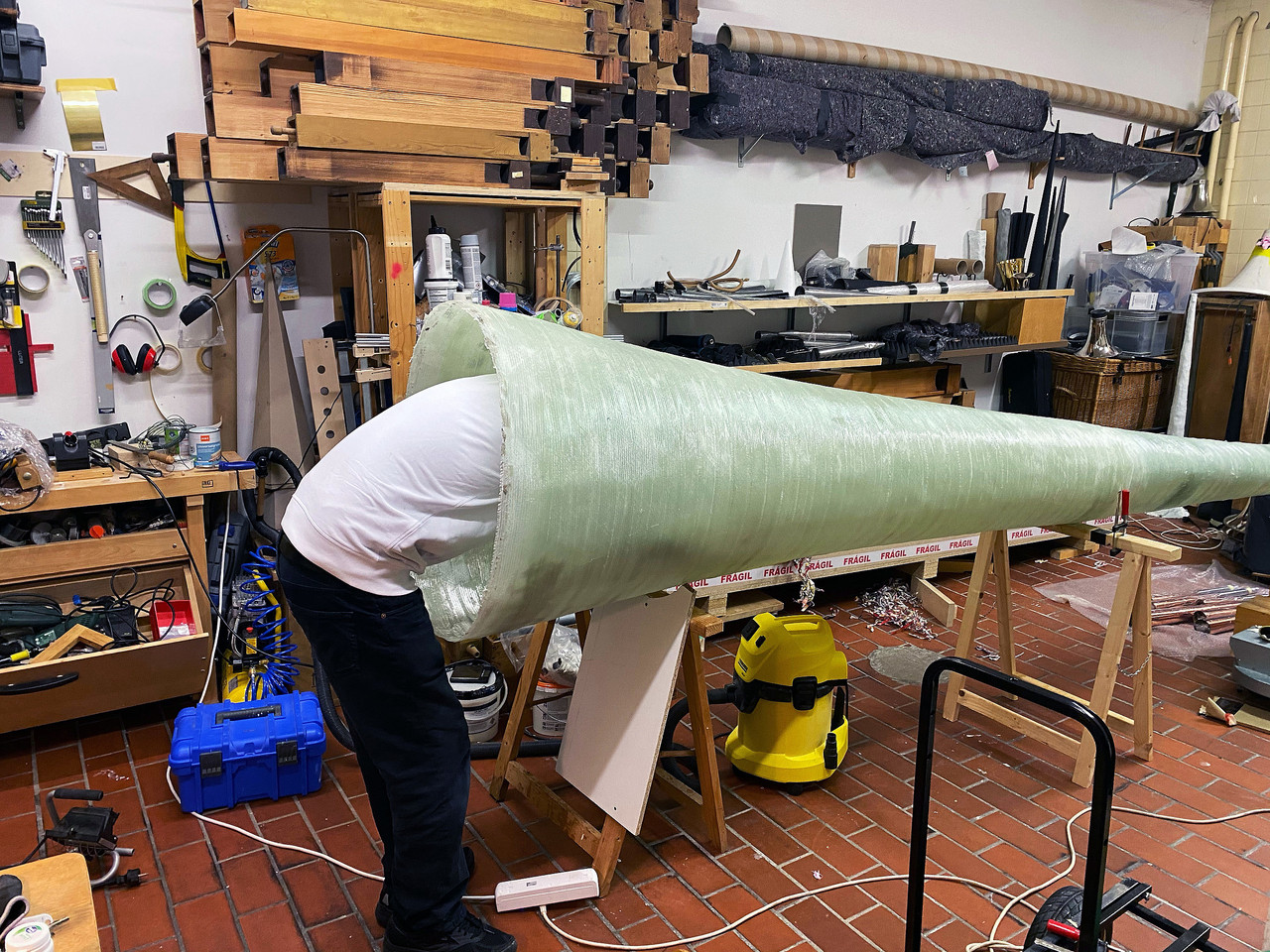
Running over 10 days in the sonorous halls of the silent green Betonhalle and featuring day-long interventions by a range of artists, »Modular Organ System« offers a unique and continuously morphing sonic terrain.
Existing in the liminal space between installation, environment, performance and concert, »Modular Organ System« is a multi-part instrument built from numerous sound generating objects that can be controlled by computer. Using established and novel construction methods as well as traditional and unconventional materials such as ceramic, wood, and plastic, the system was created through collaborations between visual artists, organ builders, technologists and artisans. Sollmann and Sprenger also collaborated with the visual artist Nico Ihlein who created ceramic and paper-maché pipe objects. The Organ System combines traditional reed pipes and an array of effect and noise pipes with motorised tuning crutches and dynamic air response to make new musical parameters accessible. Glissandi, differential tones, beats, and gliding tunings of the pipes can be realised – liberating the instrument from the constraints of traditional organs and therefore allowing composers to step out of the confines of equal temperament.
As much a sculptural installation as it is an instrument, the heterogeneous structure’s openly visible components reveal the intricacy and adaptability of its design – pipes, wind chests, air hoses, electromechanical components are laid bare in their striking physicality. Despite its magnitude, it can also be completely taken apart and re-engineered to fit any space – a literal and figurative deconstructing of the church organ and its preconceived notions of function and environment.
Playing on the concept of the organ as a proto-synthesizer, the platform interweaves contemporary electronic and instrumental music with organ traditions in hopes of expanding acoustic ranges and discovering new musical idioms. By creating a site-specific expandable context where continuous experimentation takes place, the project assumes the purpose of an interdisciplinary laboratory for music and sound, technology, art, and experience.
Musicians and composers of diverse practices have been invited to interact with the imposing instrument using various approaches. For six hours each day, the audience is invited to observe the processes of artists exploring its possibilities, sometimes with the intervention of other instruments. During this time, the presentation will alternate between various modes, ranging from sound installation to precomposed pieces to improvisational dialogues between the performing artists and the system. The Betonhalle’s cavernous dimensions become a medium in itself, as the artists work with the spatial orientation of the sound modules and the space itself. Visitors navigating the sound field will inevitably perceive the harmonic changes of the environment in their own subjective ways, suggesting a composition that can be experienced in endlessly unique variations.
The ambitious performance installation is the first of a three-part series conceived and produced by singuhr-projekte, titled Modular Music, which offers models for new forms of sound and art production across genre and medium. All three parts share a modular approach to conceiving collective compositions constantly in flux, organically responding to and fusing with the audience. Following the Modular Organ System, Rebecca Saunders' latest work »Myriad II – a concert installation« will be presented in early March, succeeded by David Tudor's »Rainforest IV« in mid-March 2022.
Presented by singuhr-projekte in collaboration with CTM Festival.
Assistant: Valeria Baudo
Objects: Nico Ihlein
Light: Matthias Singer
Programming: Stefan Doepner, Daniel van den Eijkel, Sukandar Kartadinata
Technical support: sculptureberlin
Technical Direction: Steffen Wolf
Crew silent green: Jonas Hinz, Jonas Kimpel, Fabian Arat, Simon Vierboom
Recording: Kassian Troyer, Adam Asnan
Tech Assistance stage design/light: Jan Römer, Mike Klose
Special thanks to : Hanna Schwarz, Clemens Sulz
Funded by the German Federal Cultural Foundation, and the Coproduction Fund of the Berlin Senate for Culture and Europe. The contribution of Nico Ihlein was realised thanks to the support of by the Deutscher Künstlerbund e.V within the programme »NEUSTART für Bildende Künstlerinnen und Künstler« with funding of the Federal Government Commissioner for Culture and the Media (BKM) through the NEUSTART KULTUR programme.
